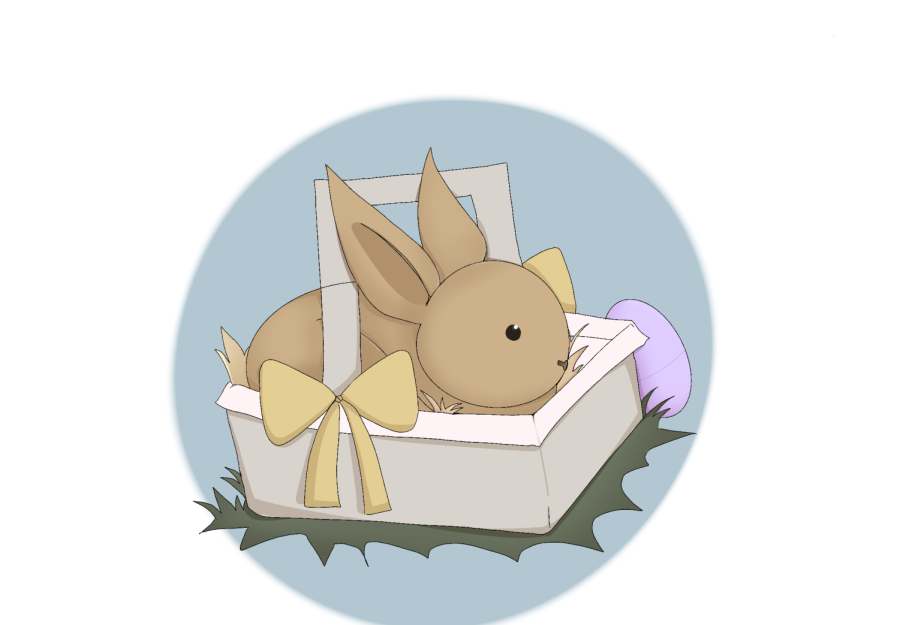Bunnies, Candy, and Eggs For Easter, How Come?
March 25, 2022
Sugary sweet candy and brightly colored eggs. A long-eared, fluffy bunny and pastel peeps. How did these commercial features come to be symbols of a religious holiday celebrating the resurrection of Christ?
According to ABC News, Easter began as a pagan holiday celebrating spring and the spring equinox. Following the introduction of Christianity, the celebration period became associated with the resurrection of Christ (abc.net.au). Though Easter is a Christian holy day, many traditions and symbols have pagan and Jewish roots, according to the History Channel. Many of those who are not religious still observe these traditions and celebrate Easter without partaking in the religious aspects of the holiday. Events like these have multiple roots, combining over time and with some features getting lost in history. Still, some explanations and traditions have carried over, and even developed, to now (history.com).
Some traditions associated with Easter may not seem related to the origin of this holiday. “I associate Easter with waking up early to do an Easter egg hunt and spending a day with my family. That’s how I’ve spent my Easters for as long as I can remember. I would say Easter is more largely known for its commercial features and advertised for its capital, not religious, purposes,” said Sophomore Nicholas Brantuas. This is true. According to the History Channel, Easter is the second-best holiday for selling candy in America. Although, some aspects have a meaning beyond profit: new life (history.com).
The Easter Bunny as a symbol is believed to have arrived in America in the 1700s with German immigrants who settled in Pennsylvania. Children would make nests for an egg-laying hare called “Osterhase” or “Oschter Haws,” so that it could lay its colored eggs. Editors for the History Channel wrote, “Rabbits, known to be prolific procreators, are an ancient symbol of fertility and new life” (history.com).
Easter eggs are also a symbol of fertility, like the rabbit. They are associated with nature coming back to life after the chilly months of winter (abc.net.au). Easter eggs are also said to represent Jesus’ resurrection, and decorating has been a tradition since the Middle Ages. One explanation for this tradition is that people would decorate eggs as a celebration to mark the end of the Lenten season of penance and fasting. The tradition has come a long way since then. Now, eggs are dyed and painted, but are also used for egg hunts (history.com).
Did you know that the largest handmade Easter egg was over 25 feet tall and weighed over 8,000 pounds? This Easter egg’s chocolate and marshmallow ingredients were supported by an internal steel frame. Candy, and finding candy in eggs, are a part of Easter celebrations through the Easter Bunny tradition. The Bunny would leave chocolate and candy to be found in the morning, and a basket would replace the nest the children had built (history.com).
From sugary Peeps to happy Easter egg hunts, Easter’s many traditions have a wide variety of backgrounds. Regardless of roots or religion, Easter can be celebrated by anyone and everyone.


